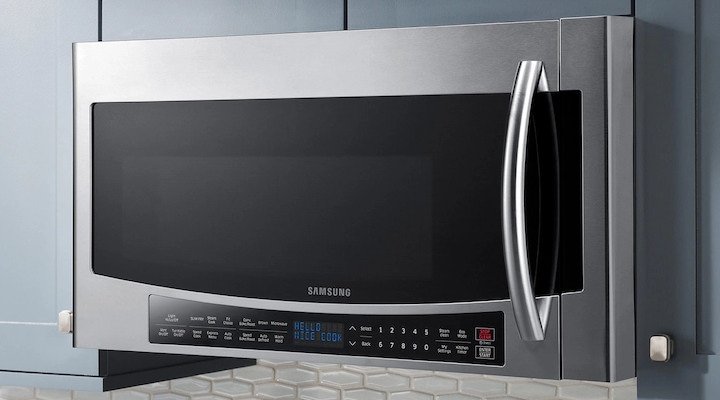
The “F2” error code on a Samsung microwave might sound like some advanced, techy problem, but it’s really just your microwave’s way of saying that something isn’t quite right with the temperature sensor or its readings. Think of it like your body’s fever: it’s a sign that something needs attention but doesn’t necessarily mean disaster. The temperature sensor ensures your food is cooked at the right heat level, and if it goes haywire, well, you might end up with a cold center in your casserole or an overcooked mug cake.
Now, don’t sweat it. By the time you finish reading this article, you’ll feel confident about tackling this error code. I’ll guide you step-by-step through the common causes of this issue and how you can resolve them, even if you don’t have much experience with appliances.
Understanding the F2 Error Code
So, what exactly is going on when your microwave shows an F2 error code? In straightforward terms, this code indicates that the microwave’s temperature sensing capabilities are acting up. Just as your smartphone might crash if its software glitches, your microwave relies on accurate temperature readings to function correctly. When it can’t get these, it gives you a heads-up through an error code.
Imagine this: you’re trying to bake a cake without knowing how hot your oven is. That’s bound to lead to a disaster, right? Similarly, the microwave can’t do its job right if it’s blind to the actual temperature inside. This could lead to uneven heating or the microwave not running at all.
From a technical perspective, the F2 error can be tied to several components – mainly the temperature sensor and its wiring – as they could be faulty or misaligned. These elements work together to ensure your microwave understands the internal heat levels. When things go awry here, the microwave throws its hands up in confusion and gives you the F2 error.
Temperature Sensor Issues
The temperature sensor is like the nerve center of your microwave when it comes to heat. Just as a thermostat reads your room’s temperature to maintain comfort, the temperature sensor does a similar job inside the microwave. If it’s malfunctioning, the microwave can’t effectively monitor how hot things are getting.
So, why might the sensor fail? For one, it might be damaged or worn out. Over time, like any other electronic component, the sensor can degrade or face a manufacturing defect that wasn’t noticeable at first. Imagine a weary detective trying to solve cases with a broken magnifying glass; it’s bound to lead to errors.
Another possibility is a loose connection or wiring issue affecting the sensor’s ability to send correct data. Just like a light bulb won’t work if it’s not screwed in properly, a sensor with loose connections can’t reliably report temperatures. Fortunately, diagnosing and addressing a temperature sensor issue is often as simple as checking the connections or replacing the sensor if needed.
Control Board Problems
The control board acts like your microwave’s brain, processing all the information from its various components, including the temperature sensor. If there’s a hiccup in this board, it can misinterpret signals or fail to process them altogether, leading to an F2 error.
Think of it as a conductor leading an orchestra; if the conductor is confused, the music won’t sound right. The control board interprets what the sensor reports and decides how the microwave should respond. If it’s faulty, even a perfectly fine sensor can look broken.
Problems with the control board could stem from electrical surges, wear and tear, or sometimes just a random glitch, much like your computer freezing for no apparent reason. In many cases, resetting the microwave or inspecting the board for visible signs of damage (like burnt areas) can be helpful.
Next Steps and Solutions
After identifying possible culprits behind the F2 error, it’s time to roll up your sleeves and troubleshoot. First off, try the old IT classic: unplug your microwave and plug it back in after a few minutes. It’s surprising how often this simple step can reset minor glitches.
If the error persists, and you’re comfortable doing so, you might check the sensor and its connections for visible issues or attempt a reset through the control panel, referencing your microwave’s user manual for precise instructions. For more persistent problems, seeking help from a professional technician might be the best bet.
Preventing F2 Errors in the Future
You’re probably wondering how to avoid running into this error again. Just like regular maintenance keeps your car running smoothly, treating your microwave with a bit of care can prevent future headaches.
Routine checks can go a long way. Consider periodically inspecting your microwave for any visible wear and tear, especially after a power surge or if it’s been used extensively. It’s like giving your microwave a health check to ensure everything’s working as it should.
Additionally, avoid running the microwave empty, as this can strain components and potentially lead to issues. Keep the vents clean and ensure proper ventilation around the appliance. Similar to how clean air helps you breathe better, proper ventilation helps your microwave function optimally.
In summary, understanding and preventing the F2 error code involves a blend of recognizing the signs early, performing occasional maintenance, and not hesitating to get professional help when necessary. With this knowledge, you’re well-equipped to tackle those pesky F2 errors like a pro. Enjoy your cooking!